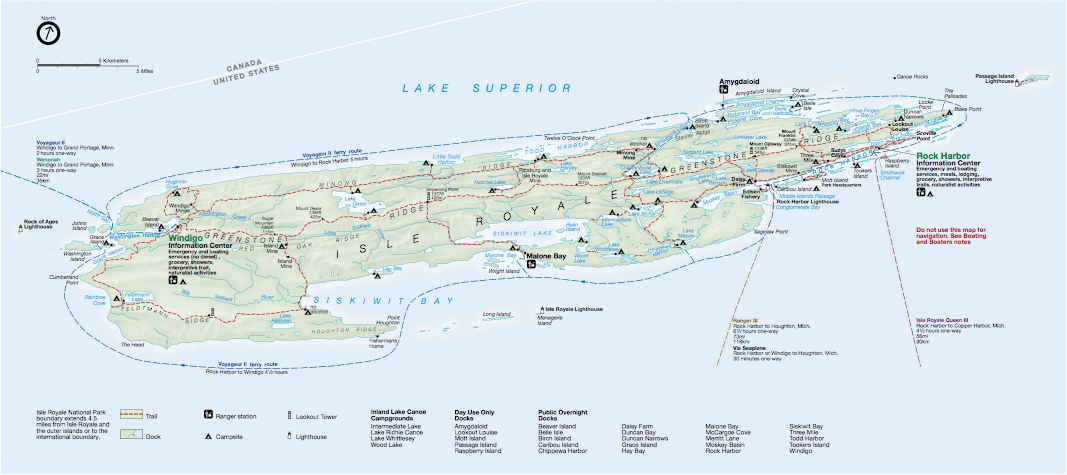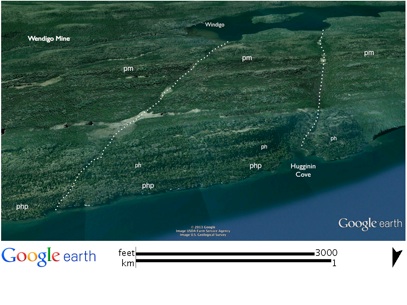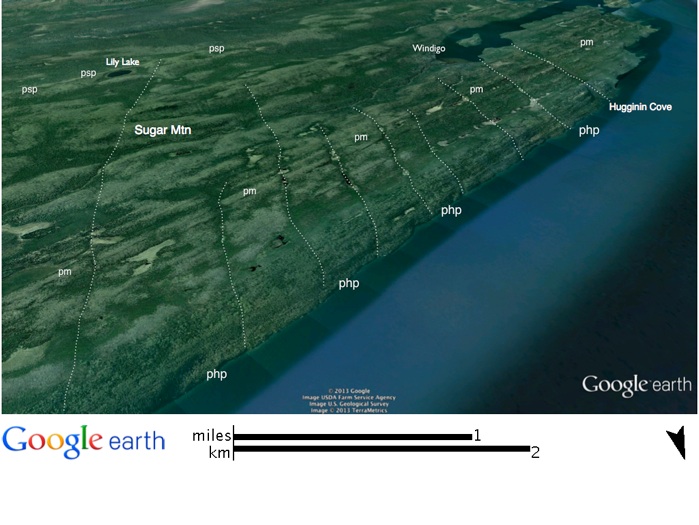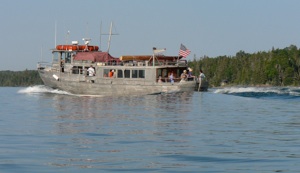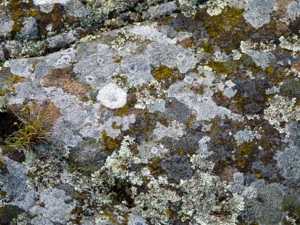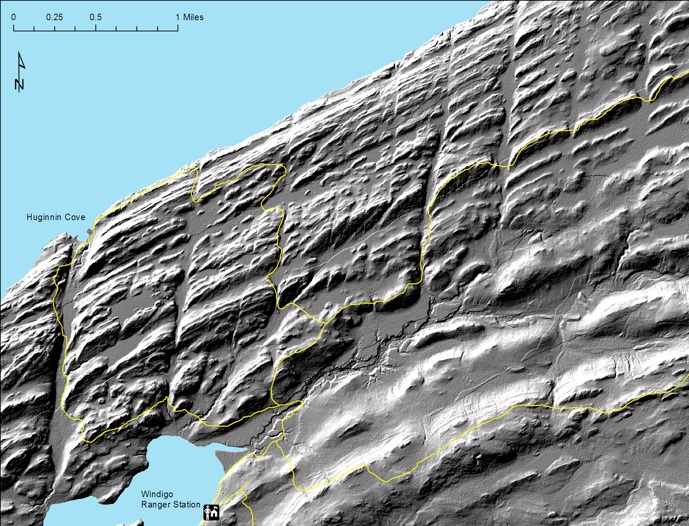With the flows dipping SE, moving toward the N side of the island takes us further into the PLV section, until we reach the horizon of the Hill Point flow (php). This is an ophitic flow, which forms imposing cliffs along the shore from Hugginin Cove all the way to Todd Harbor,
a distance of about 24 km (15 mi). This flow also makes up the majority of shoreline from Pickerel Cove all the way to Hill Point itself, at the W end of Five Finger Bay, about 64 km (40 mi) from Windigo. The tilted strata along the shore make the shoreline steep, and the prevailing winds from the NNW can make conditions treacherous
for small boats.
The Hill Point flow is a coarse-grained, ophitic
unit with augite oikocrysts of 2 cm (0.8 in) or more. The vertical fractures are superimposed across the dipping strata and are noticeable throughout the entire flow. From the W area of the flow to the E area, the fractures gradually begin to change from N-S to more N-E trending. According to Longo (1984), the Hill Point flow may correlate with a large flow on the Keweenaw Peninsula, the Scales Creek ophite, which extends all along the Keweenaw Peninsula for more than 160km (100 mi) of strike length, and right through Houghton, which is about 110km (68 mi) SSE of Hugginin Cove.


